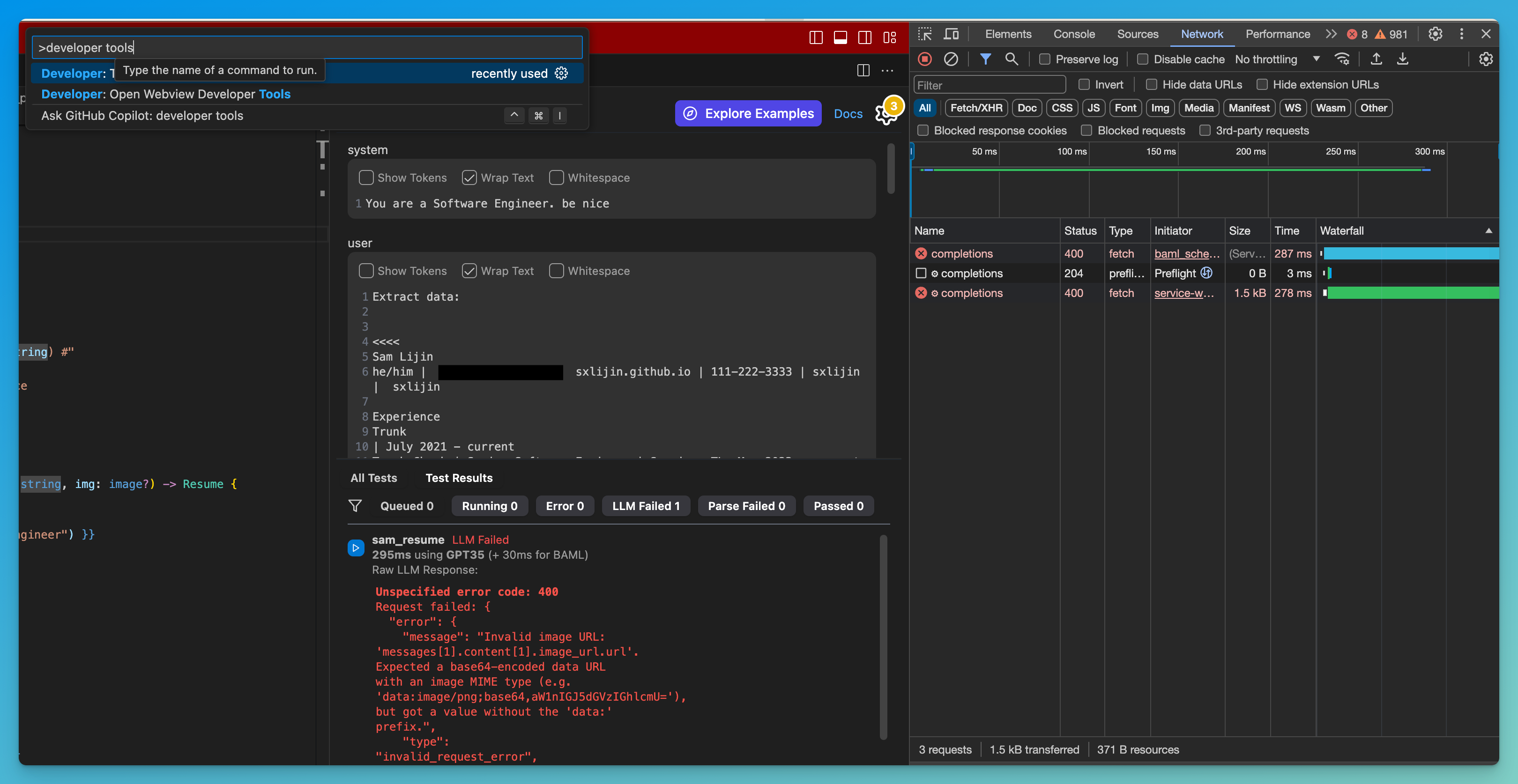Comparing AI SDK
AI SDK by Vercel is a powerful toolkit for building AI-powered applications in TypeScript. It’s particularly popular for Next.js and React developers.
Let’s explore how AI SDK handles structured extraction and where the complexity creeps in.
Why working with LLMs requires more than just AI SDK
AI SDK makes structured data generation look elegant at first:
Clean and simple! But let’s make it more realistic by adding education:
Still works! But… what’s the actual prompt being sent? How many tokens is this costing?
The visibility problem
Your manager asks: “Why did the extraction fail for this particular resume?”
You start digging through the AI SDK source code to understand the prompt construction…
Classification challenges
Now your PM wants to classify resumes by seniority level:
But wait… how do you tell the model what “junior” vs “senior” means? Zod enums are just string literals:
Your clean abstraction is leaking…
Multi-provider pain
Your company wants to use different models for different use cases:
Testing without burning money
You want to test your extraction logic:
The real-world spiral
As your app grows, you need:
- Custom extraction strategies for different document types
- Retry logic for flaky models
- Token usage tracking for cost control
- Prompt versioning for A/B testing
Your code evolves into:
The simple AI SDK call is now buried in layers of infrastructure code.
Enter BAML
BAML was designed for the reality of production LLM applications. Here’s the same resume extraction:
Notice what you get immediately:
- The prompt is right there - No digging through source code
- Enums with descriptions - The model knows what each value means
- Type definitions that become prompts - Less tokens, clearer instructions
Multi-model made simple
Use it in TypeScript:
Testing that actually tests
With BAML’s VSCode extension, you can:

- Test prompts without API calls - Instant feedback
- See exactly what will be sent - Full transparency
- Iterate on prompts instantly - No deploy cycles
- Save test cases for regression testing

No mocking required - you’re testing the actual prompt and parsing logic.
The bottom line
AI SDK is fantastic for building streaming AI applications in Next.js. But for structured extraction, you end up fighting the abstractions.
BAML’s advantages over AI SDK:
- Prompt transparency - See and control exactly what’s sent to the LLM
- Purpose-built types - Enums with descriptions, aliases, better schema format
- Unified model interface - All providers work the same way, switch with one line
- Real testing - Test in VSCode without API calls or burning tokens
- Schema-Aligned Parsing - Get structured outputs from any model
- Better token efficiency - Optimized schema format uses fewer tokens
- Production features - Built-in retries, fallbacks, and error handling
What this means for your TypeScript apps:
- Faster development - Test prompts instantly without running Next.js
- Better debugging - Know exactly why extraction failed
- Cost optimization - See token usage and optimize prompts
- Model flexibility - Never get locked into one provider
- Cleaner code - No wrapper classes or infrastructure code needed
AI SDK is great for: Streaming UI, Next.js integration, rapid prototyping BAML is great for: Production structured extraction, multi-model apps, cost optimization
We built BAML because we were tired of elegant APIs that fall apart when you need production reliability and control.
Limitations of BAML
BAML does have some limitations:
- It’s a new language (but learning takes < 10 minutes)
- Best experience requires VSCode
- Focused on structured extraction, not general AI features
If you’re building a Next.js app with streaming UI, use AI SDK. If you want bulletproof structured extraction with full control, try BAML.